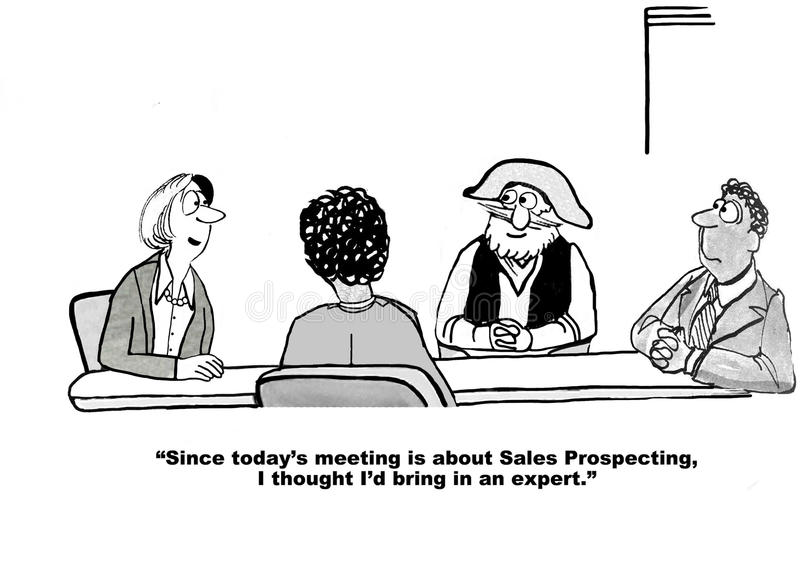Many people believe prospecting is the toughest part of selling. I’m actually not sure I believe that, but I do believe prospecting is tough.
Our customers overwhelmed with just doing their jobs. Add on top of that, the fact they are constantly deluged with messaging from innumerable companies competing for attention and their budgets.
Getting through all these barriers, engaging customers who may not want to be engaged, who may not be interested or care is a huge challenge. Finding customers that may be interested and want to engage isn’t easy.
Too many sales people don’t want to prospect, it’s tough work. It’s much easier working with those customers that express interest, have a real need to buy, and are engaged in a buying journey. Given a choice, the majority of sales people want to spend time with these, doing everything they can to, simultaneously, find and qualify new opportunities.
For years, in the name of “efficiency,” we’ve restructured our sales organizations, developing “prospecting specialists,” otherwise known as SDRs. Or we hire appointment setting organizations to reduce the time sales people have to spend prospecting.
The problem is, most of these roles are “entry level positions.” New sales people are hired as SDRs. If they are successful, they more into the “real” sales jobs–AEs, BDMs, Account Managers.
But if prospecting is one of the most difficult parts of selling, why are we assigning our least experienced people to do our prospecting?
It seems ironic, the part of selling our people have the most difficulty with, the part that seems to be getting the highest attention—everyone needs more qualified opportunities in their pipelines, I’ve never met a sales person that says, “I have too many deals,” — is the part re give to our newest people.
Coupled with this is the importance of “first impressions.” If we want to catch prospects’ attentions, if we want them to express interest in learning more, if we want to convert the disinterested into interested, why aren’t we putting our best people on these initial conversations.
Many will argue, “It’s too expensive, we can’t afford the cost of selling?”
I would tend to respond, “The opportunity cost is too high, we can’t afford not to invest in this phase of the sales process!”
Clearly, an experienced person will have a greater ability to engage a customer in the first call than an inexperienced one. They have a greater ability to engage the customer in a conversation about their business and problems, because they have a deep experience base in working with others on these issues. They will have a greater ability to challenge the customer, to get them to think differently because they know what customers face. They can accomplish more in a short conversation because they not only know what to ask, but they know what to listen to, how to dive deeper, how to engage customers in the things important to them.
The yield an experienced person will get from 100 conversations is likely to be greater than the yield an inexperienced person might get from those conversations. It’s pretty easy to understand this, because of the for the reasons outlined above.
Recently, I read one of “those” articles promoting high volumes of calls. The best performer had 150 “conversations,” averaging a little over 1 minute apiece, producing 3 meetings, or a yield of 2%. Clearly, given the average duration of these conversations, there was not a lot of discovery or qualification going on, so one wonders about the quality of the meetings being set up. But let’s say they were great quality meetings, let’s go further to say, the 150 calls were to the right companies and people. After all, why would we ever call anyone outside our ICP?
But what if we reimagined this. Clearly, these people were more focused on volume of conversations. What if we focused on quality of conversations–with people that had the experience and capability to engage customers at a much deeper level. What percent of those 147 conversations might someone be able to convert to high impact meetings, simply because they were able to and took the time to engage the customer more deeply?
It’s pretty easy to see how we can produce far greater results than the less experienced person. Yes, it would take them a longer period of time, because they are engaging in longer, more in depth conversations–but if the yield is far higher, wouldn’t the cost of selling be far less.
Or we can look at it a different way. What if in the same amount of time, and experienced person was able to produce 2 or more times the number of high quality meetings as the inexperienced person? The experienced person wouldn’t have the same number of conversations, but they would be getting more yield from each of those conversations. We can imagine even further, that experienced person costs 2 times as much as the inexperienced person. It’s not hard to imagine, in the same period of time, the experienced person having a far greater yield than the inexperience person. To break even, they would only have to schedule 6 follow on meetings, but in reality, they might produce more or the meetings they produce might be of higher value.
If prospecting is the toughest part of selling, if sales people are opportunity starved, don’t we owe it to them and our companies to put our very best people into those roles?

Leave a Reply